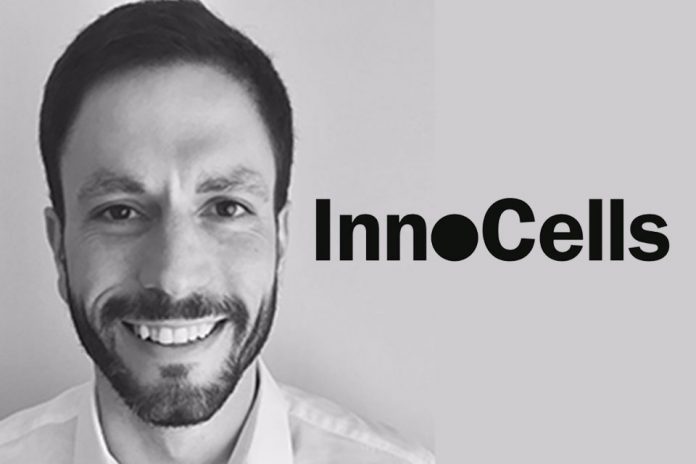Commoditisation of the basic products, hybrid models that embrace a human-touch and user-centric digital platforms are all set to play an integral part in the future of wealth management, claimed InnoCells CEO Julio Martínez in a research interview with FinTech Global.
There has been a steady rise in the volume of money being invested into the WealthTech space since 2014, increasing from $928.6m to $2.5bn last year, according to data by FinTech Global. However, in 2018 investment volumes are skyrocketing past last year’s total, with $3.43bn being funded in just the first three quarters – the first quarter of 2018 saw 80 per cent of the capital raised in the entirety of 2017. WealthTech has seen several landmark deals this year, including a $150m Series E raise by eToro (investing and trading marketplace), and a $50M investment by Blackrock in the micro-investing app Acorns.
In the thriving WealthTech market, Martínez has identified three major trends that will shape the sector over the coming years. The first of these trends is the commoditization of the basic wealth management products. Since robo-advisors penetrated the market in 2008, a significant number of new entrants have launch differentiated value propositions that nonetheless serve very similar customer needs.
In addition, a large number of financial institutions are investing significant money and effort to integrate new technologically-driven wealth and portfolio management tools as the demand for these services is increasing, and to avoid losing customers to new players. Examples include Wells Fargo and UBS partnering with SigFig (a hybrid robo-advisor) as well as Morgan Stanley partnering with Addepar (an investment management platform). As a result, an unprecedented number of WealthTech solutions have appeared in the market, which will likely lead to high competitive tensions that will continue challenging prices.
He said, “This has caused aggressive competition among financial institutions and WealthTech companies that are looking to support the rising consumer interest. Even though new offerings are increasing the size of the market by accessing previously underserved customer segments, this increasing market saturation will most likely continue driving fees lower and challenging the revenue growth of some players”.
The second established trend in the market is a move towards a hybrid model that integrates both digital tools and human interaction. Having the ability to consult a human helps to build a level of trust with the consumer, providing a level of comfort that has not yet been reached with purely digital services when it comes to sophisticated products and life-long financial planning.
Martínez said, “The WealthTech and wealth management space is a little more difficult to disrupt in the sense that acquiring customers is harder. For instance, in the lending space the customer has a very good reason to go to the firm as they want a loan. The need is tangible and the customer is typically going to be more proactive. In the wealth management space, there is obviously a need as a customer wants to manage their wealth and make returns, but for many users it still is a ‘New Year’s resolution type of need’ and it also has a lot of trust implications.”
In a hybrid model, Martínez believes that the digital side is sufficient for the majority of people considering the type of investing they are engaged in. Human interaction options would mainly act as a safety net which is there in case a user does come across an issue, or there is something they are uncertain about. This is currently an important element to provide assurance to consumers on a deeply personal subject in a sector where the “human” aspect in the relationship with advisors has historically been integral.
While Martínez sees a need for these hybrid solutions, he does not think they are essential for success in all types of wealth management solutions. Micro-investing companies like Robinhood, which is purely digital (and has raised more than $500M in venture funding) have obviously done very well.
Hybrid models are more relevant for financial planning and long-term financial preparation, which often lead to more lucrative customers and products. A success case in this vertical is the hybrid wealth manager Personal Capital, which has amassed 1,8M registered users and $8bn AUM since being founded in 2009. However, convincing people to hand over access to money, investments and retirement strategies can be difficult as these are major and personal elements of the consumers’ life. This can result in elevated customer acquisition costs, which must be added to the higher operating costs of running a platform that is not only digital and incorporates well-trained advisors.
“The trend of pressing low fees coupled with potentially higher customer acquisition and operating costs leave one wondering how players are going to look for sustainable models. Some businesses may face a ‘negative jaws’ scenario. We will need to understand what are the types of products that are going to bring sustainability to the industry,” he added.
The third significant trend that Martínez sees in the current WealthTech market is a sustained demand for digital platforms that incorporate sophisticated products, with this appealing especially to the millennial generation. This customer segment is becoming the most relevant as globally millennials are predicted to possess $20tn in assets by 2030, and in North America alone the baby boomer wealth transfer is expected to result in further $30tn being passed down by 2050 (analysis by Ribbit Capital). The way this generation interacts with financial services has driven important changes in the product offering, as players strive to ensure their relevance in the evolving market.
Regarding the accessibility of sophisticated products, he said, “As increasing competition drives fees down, I think that players will move up in the market to offer specialized products that millennials are comfortable purchasing digitally. We will see a trend of players becoming more sophisticated in the types of assets they offer, so that they command a higher pricing power.” And added, “Simply distributing ETFs at zero fees is not a sustainable business model, so these players need to find niches, like alternative assets, beliefs-based stock-picking portfolios, hedge funds, or more sophisticated portfolios with hedging strategies”.
Although it is not in practice a simple task, product sophistication will need to cohabit with the clean and easy customer experience that millennials demand. He said, “I think the user-focused journey is here to stay. The answer is not just cluttering products with sophisticated and niche features that allow for higher fees. Financial institutions and WealthTechs alike are looking to properly address customer segments in a user-centric way.”
Historically, a brand and its reputation played a major part in how many customers it attracted and retained. However, as millennials are substantially more willing to change provider for a better deal, it has resulted in the success of newer customer-facing businesses. This has subsequently impacted older generations, with baby-boomers and generation X following suit and increasingly adopting digital interactions with regards to their finances. In turn, this has forced financial institutions to shift their focus back to the consumer in order to remain relevant.
Open banking
As the open banking initiative is encouraging financial institutions to partner with WealthTech companies, it is helping to provide them with new solutions and technology. For example, startups such as Motif (which Goldman Sachs is licensing as a white-label platform) can offer low-cost investment services for millennials who are interested in creating an ethical portfolio which supports companies that, for example, have a positive impact on the environment, whilst still offering traditional solutions.
While Martínez believes that partnering with WealthTech companies is the best way to go, he understands that this approach is not right for all financial institutions. Deciding on whether to partner, acquire or build in-house depends entirely on the DNA of the institution and situation-specific circumstances. Some may strategically choose to develop a service internally from scratch to onboard FinTech specialist talent to help them succeed in their broader transformation efforts and further grow long-term by gaining experience in building digital products.
On the other hand, those that want to acquire the solutions may do this as they are certain about the solution’s value and want to deploy it to customers immediately, or they may wish to want to avoid supplier risk or downing out to competition.
With this in mind, Martínez does believe that all financial institutions need to seriously consider potential partnerships in their strategic conversations and decide when they should take that avenue. Partnering allows to accelerate the go-to-market of the products, and it also offers the ability to deliver a wider variety and more personalised solutions to a Financial Institution’s different international markets without incurring in the upfront build-up cost.
“I think that Open Banking will definitely help financial institutions to open up and partner with the ecosystem. Open Banking accelerates the realisation of FIs that they cannot come up with all the new technology, good ideas and products that their clients want. It makes a lot of sense to partner with WealthTechs and offer improved solutions to their client-base without concentrating too much build-up risk”, explained Martínez.
“What’s important is that FIs are coming to realise the customer should be at the centre no matter what. Some players are born this way and others need to evolve – that’s fine. We are all here to deliver value to the customer and the realization is that this is the only way to thrive these days.”, concluded Martínez.
Copyright © 2018 FinTech Global











